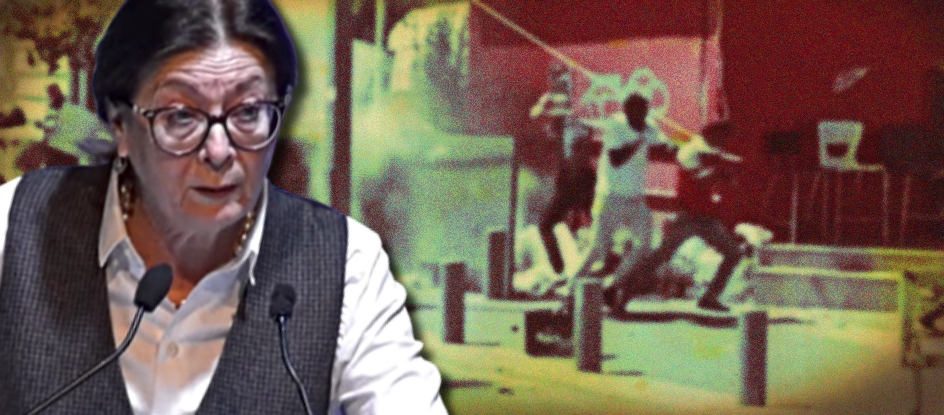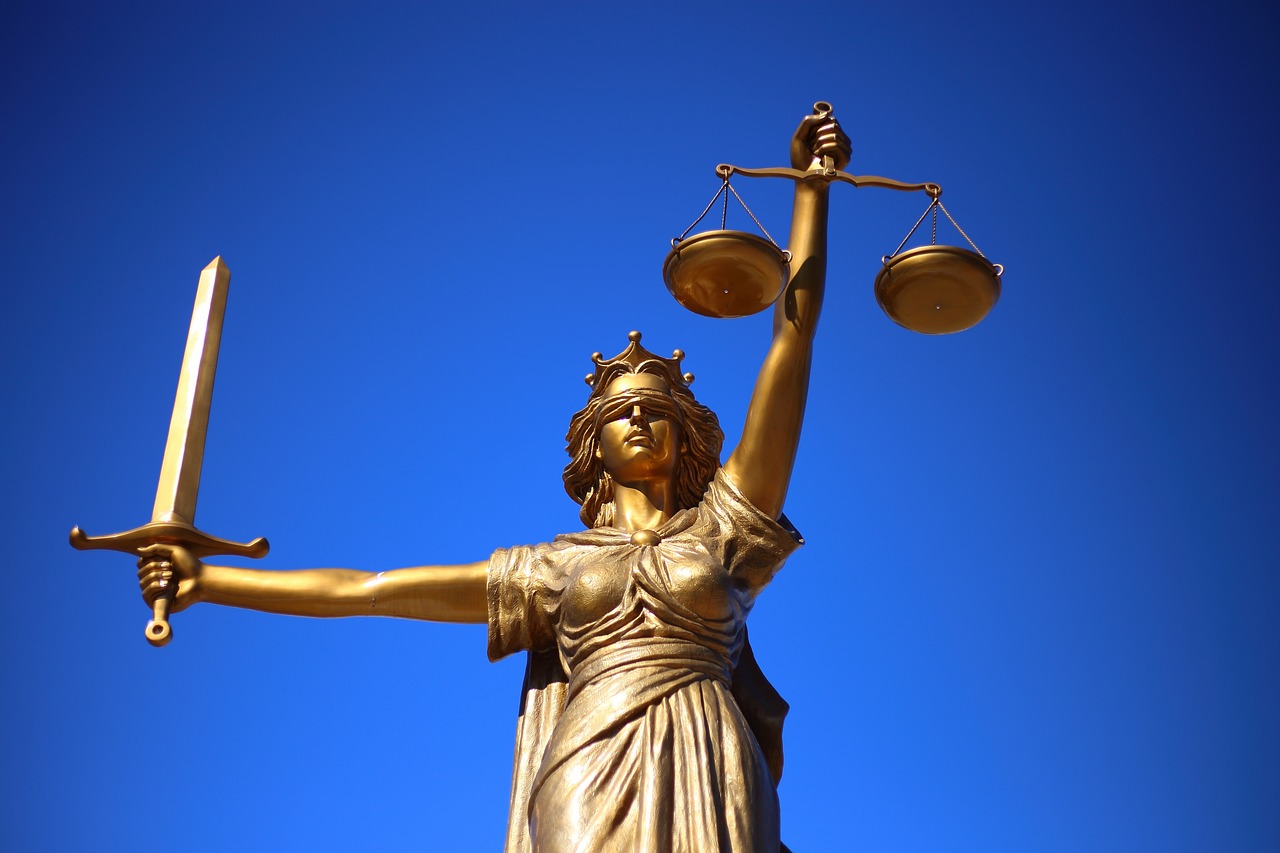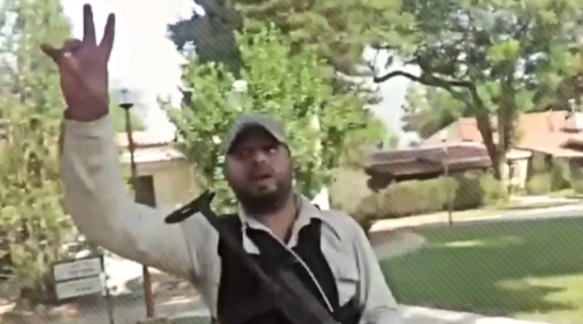At every critical point in the last 15 years, Supreme Court rulings subverted government policy and crippled the government and legislature’s ability to solve the problem.

Since the judicial reform legislation was introduced, some have wondered whether Israel’s Supreme Court really has an influence on daily life in Israel. Even those generally supportive wondered if this battle, which has seemingly divided the country, was necessary for an issue that is perhaps more ideological than practical. Then came the riots last Saturday by illegal immigrants in Tel Aviv, and everyone was reminded just how much the Supreme Court has played a role in placing obstacle after obstacle in front of every Israeli government that has tried to address the issue in the past fifteen years.
The issue of illegal immigration in Israel is the story of a solid majority of the country, right and left, coming together, determined to ensure Israel’s character as a Jewish state against the Supreme Court, who undermined every policy solution.
On many issues, the Israeli government has been stagnant, hesitant and lethargic in addressing serious problems. That is not the case in dealing with illegal immigration. Consecutive governments have passed legislation and implemented policy solutions which have been effective. But it was the Supreme Court who time and time again intervened, repealed, struck down and rejected legislation and government decisions even though they were passed by large majorities in the Knesset.
Illegal immigration begins
The wave of illegal immigration from Africa began in 2005, and increased in the following years. By 2012, about 64,000 thousand illegal immigrants from Eritrea and Sudan entered Israel through its southern border with Egypt. Until 2012, the government primarily focused on attempts to curb the flood of illegal immigrants at the border through various means. During 2012, the construction of the border fence began, which quickly led to a drastic reduction in illegal border crossings.
Illegal Immigrants entering Israel through the border with Egypt
From 2012 and onward, government policy has focused on removing illegal immigrants already in Israel. Through legislation and government decisions – the Holot Detention Center, the Deposit Law and deportation to a third country – Israel has deported about two-thirds of the population of illegal immigrants. Today, there are about 24,000 illegal immigrants in Israel, not including children born in Israel.
Supreme Court hinders the government at every turn
Until 2012, the country waged a desperate struggle to prevent illegals from crossing the mostly open Sinai border. There were many failures along the way. A low point in dealing with the crisis was when illegals were transported by the IDF on buses to Be’er Sheva and other places. From there they continued to south Tel Aviv or Eilat and were absorbed into the community of illegals that grew rapidly (similar to “catch and release” in the US). But alongside the failures of the governments (Olmert and later Netanyahu), the Supreme Court issued several rulings proclaiming that Knesset legislation or government decisions were illegal and thus made dealing with the problem even more difficult.
Indefinite definition
At the beginning of the immigration wave, Israel resorted to a procedure of indefinite detention of illegal immigrants, mainly from Sudan, which is considered an enemy country. This policy was implemented until July 2007, under which illegal were held for extended periods of detention. In April 2006, human rights organizations appealed to the Supreme Court against this policy. Consequently, the government capitulated, and the policy was changed before a ruling was made.
Catch and deport
Another policy used in the early years was “warm return”. This began during the Olmert government and was based on an agreement with Egypt. It allowed the IDF to forcefully return groups of infiltrators apprehended near the border. Nonetheless, in 2007, an appeal was made to the Supreme Court against this policy. The court case continued for four years, during which the policy was continually gutted under the scrutiny of Israel’s Supreme Court. In 2011, the government announced that it would stop enforcing the policy.
Besides harming the government’s ability to contain illegal immigration, the Supreme Court also crippled the government’s attempts to discourage and de-incentivize illegal immigration. In 2010, the government decided to act against businesses employing illegal immigrants and enforce the current law. Here, too, an appeal to the Supreme Court delayed implementation of the government decision, until it finally announced that it will not enforce the existing prohibitions in the law on employment of illegals. This willful neglect joins a ruling given in an Israeli district court in 2010, which stated that infiltrators seeking asylum may work in Israel, even though their residence visas do not permit it.
Policy to prevent illegal immigration communities
The government also discontinued the “Gedera-Hadera” procedure, formulated by the then Minister of the Interior Eli Yishai, after an appeal was filed with the Supreme Court against it. According to it, illegals could not work and stay in the center of the country. The goal was to prevent the concentration and formation of communities of illegal immigrants, such as in the South Tel Aviv neighborhoods.
Work permits incentivized illegal immigration
On the issue of illegal immigration, Israeli governments are not without mistakes. They were late in addressing the issue and then adopted inconsistent policies and were hesitant to implement the policies decided on. But at the same time, the Supreme Court severely hindered the government’s ability to handle the problem, especially regarding work and residence incentives.
Senior attorney in the supreme court division, Yochi Gansin, who represented the state in many illegal immigration appeals, testified that the court’s decisions relating to employment of illegals had a direct and critical effect on future illegal immigration. “Until 2007, the State of Israel did not issue work permits to infiltrators. This year, contrary to a government decision, it was decided to give 2,200 work permits to infiltrators, so that they could work in hotels in Eilat. After that, the flow of illegals increased three fold. Then they [the State] decided to give a few hundred more work permits, again without a government decision, and even then the flow increased… The result of this is clear: the data shows an increase in the graph every time the State of Israel issues either work permits or residence permits.”
“The Infiltrators Law”: Israeli government acts, Supreme Court repeals
After the border fence was constructed in 2012, infiltration from the Sinai border dropped to almost zero. At this point, the government dealt with two complementary challenges: removing the maximum number of illegal immigrants already within the country, and simultaneously creating negative incentives that would prevent new infiltrators from arriving through other means.
A series of measures under the title “The Infiltrators Law” included amendments to the old law to prevent infiltration. The principle in these laws was that illegal immigrants could not move freely throughout the country, but would be under the custody of the prison service in the Saharonim and Hula facilities until they were deported to other countries.
First Amendment
The first amendment to the law was passed in 2012 and established that an illegal against whom a removal order was issued could be held in custody for three years. A petition was filed to the Supreme Court, and in September 2013, the court overturned the law.
Second Amendment
The Knesset realized that it was facing a significant challenge from illegal immigration and rushed to pass another amendment to the law. This next amendment significantly reduced penalties and stipulated that illegals could only be held in custody for a year, after which they will be transferred to an open facility, where the state will provide accommodation, food, drink and basic health needs. In order to implement the plan, the Holot facility was built in the southern part of the country. It could hold about 3,000 illegal immigrants who could leave the facility during the day, but would be prohibited from working. NGOs appealed to the Supreme Court against this amendment as well, and in September 2014, the Supreme Court struck down the law.
Minister of Interior at the time, Gideon Sa’ar, was highly critical of the Supreme Court, saying that the court “made a mistake.” He could “not accept the verdict of the High Court” since its implementation would mean the end of a “Jewish democratic state because our borders will be overrun…with illegal infiltrators.” Sa’ar explained that the Knesset would have to pass legislation preventing the Supreme Court from intervening on the issue.
Third Amendment
The Knesset did not despair, and in December 2014 enacted another amendment, the third in number. This time, the period of detention in custody was shortened to three months instead of one year, and the period of stay in the Holot facility was limited to one year and eight months and additional restrictions were applied. That wasn’t enough either. Another appeal was filed to the Supreme Court and in August 2015 a ruling was issued that repealed parts of the law, limited the stay in the Holot facility to one year and stipulated that those who have already stayed for such a period will be released immediately.
The Deposit Law
In 2017, the Knesset enacted the Deposit Law, which stated that illegal immigrants working in Israel would be required to deposit 36% of their income in a special fund that they could redeem only upon leaving the country. The amount would comprise the employer’s obligations (16%) and part of the employee’s salary (20%). Here, too, an appeal was filed to the Supreme Court, and despite concrete data proving the effectiveness of the law in incentivizing the departure of infiltrators, in April 2020, the Supreme Court ordered the partial repeal of the law, and determined that only the employer’s share would be transferred to the deposit fund.
The measures taken by the state have been proven to be effective, and despite repeated repeals of laws, the rate of infiltrators leaving has remained consistent and stable at around 3,000 infiltrators every year.
Resettlement in a third country
The policy that was supposed to put an end to the phenomenon was the policy of resettlement in a third country, which the Population Authority announced in a procedure published in July 2015. Agreements were reached with Uganda and Rwanda who absorb the illegals. However, until the illegals left, they would remain in custody at the Holot facility.
After NGOs appealed to the Supreme Court, it issued an injunction, which froze the implementation of the procedure and prevented the state from keeping those who refused to leave the country in the Holot facility. In August 2017, a ruling was issued that prohibited the state from keeping those refusing to leave the country in any type of custody. While it did not cancel the removal procedure on a theoretical level, the ruling made it impossible to implement it.
The government did not throw up its hands in despair. Instead, it amended this law as well. In January 2018, the government announced that agreements with Uganda and Rwanda would be amended so that they would also take in illegals who would leave the country under compulsion. In the immediate aftermath, activists waged an aggressive campaign against the agreement in Israel and around the world. This included demonstrations in Israel and in front of Israeli embassies and host countries’ embassies around the world, appeals to the United Nations, massive media pressure and, of course, appealing to Israel’s Supreme Court. The court issued orders that froze the implementation of the removal, and in April 2018, after more weeks of pressure, the program was canceled due to the withdrawal of Uganda and Rwanda from the agreements.
A Supreme Court with no limits
Israeli governments have failed in many areas and overlooked strategic challenges. However, this is not the case on the issue of illegal immigrants. After a short period of inaction, the governments generally acted effectively in addressing the two problems of securing the Sinai (southern) border and finding solutions to encourage illegals to leave the country. Despite this, at every intersection, at every strategic decision point, the Supreme Court judges were there to subvert government policy and make it difficult for the government and legislature to solve the issue.
The Israeli government responded in various ways to the legal battles with the Supreme Court. Sometimes faced with legal proceedings and public pressure, the government capitulated and announced it would wholly or partially abandon the policies it had hoped to implement. At other times, the government remained steadfast and continued to work on alternative solutions to the issue that could meet the Supreme Court’s standards. But nothing ever satisfied the court. It refused to budge, and in the end struck down the Deposit Law as well. Judge Solberg warned his colleagues on the court that continuously repealing laws of the Knesset is unhealthy. During the hearing on the appeal against the deposit law, he said that there is a point where the court needs to know its limits: “Once, twice and three times, this court has annulled a legislative arrangement on the issue in question, and we are now for the fourth time. We must be careful that this behavior doesn’t become habit, because habit becomes nature.” But this warning fell on deaf ears.
The achievements in the battle against illegal immigration resulted from successive Israeli government’s determination to solve the problem. After securing the border with Sinai, it constantly exerted pressure and provided incentives for illegal immigrants to depart the country. Thanks to these efforts, a consistent and stable flow of illegal immigrants leaving the country has been maintained even up to the present, which if continued may bring a desirable solution closer. The Supreme Court is not to blame for the problem of illegal immigration, which was caused by political circumstances in East Africa. However, its rulings and constant intervention have made it extremely difficult for the government to find solutions to the problem and have no doubt prolonged a problem which may have been solved years ago.




